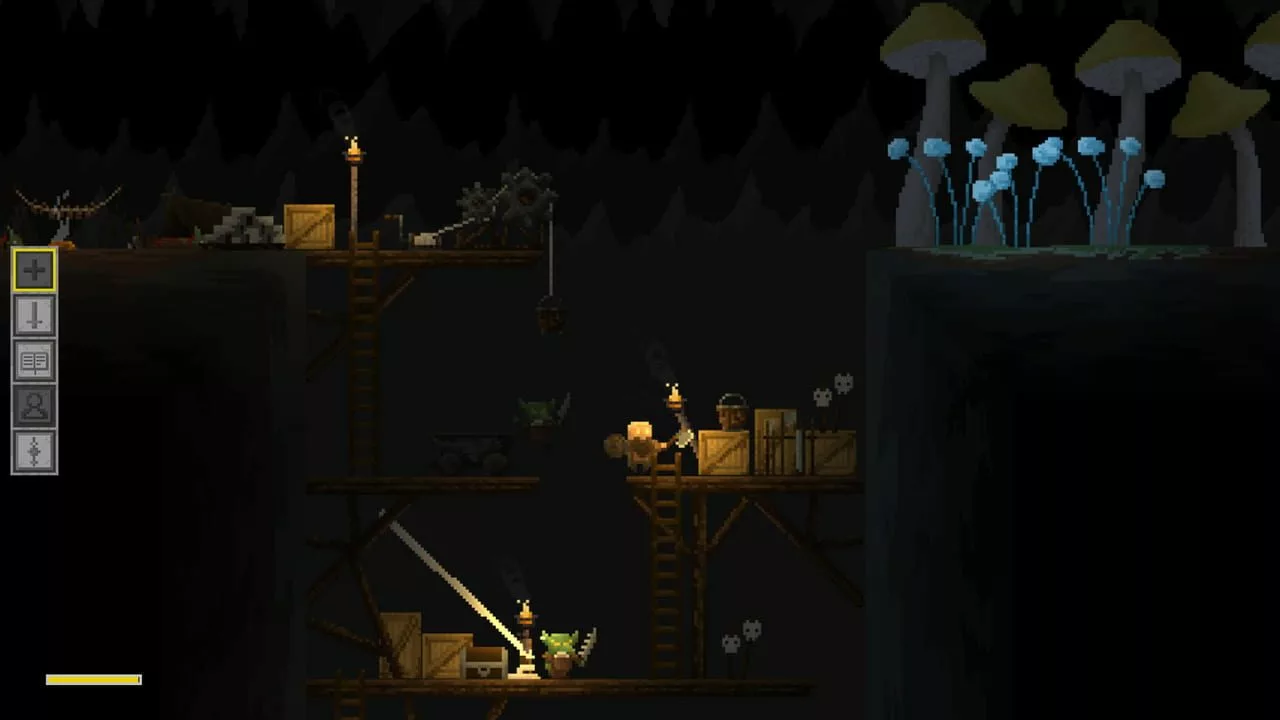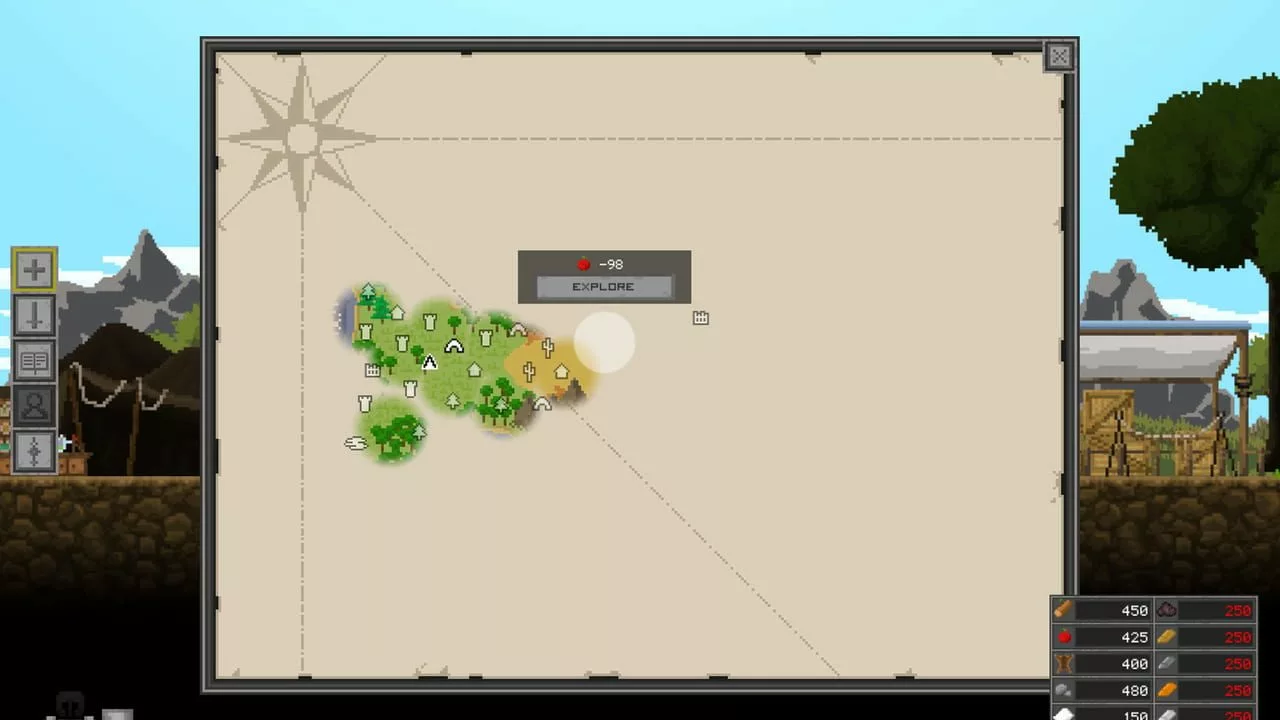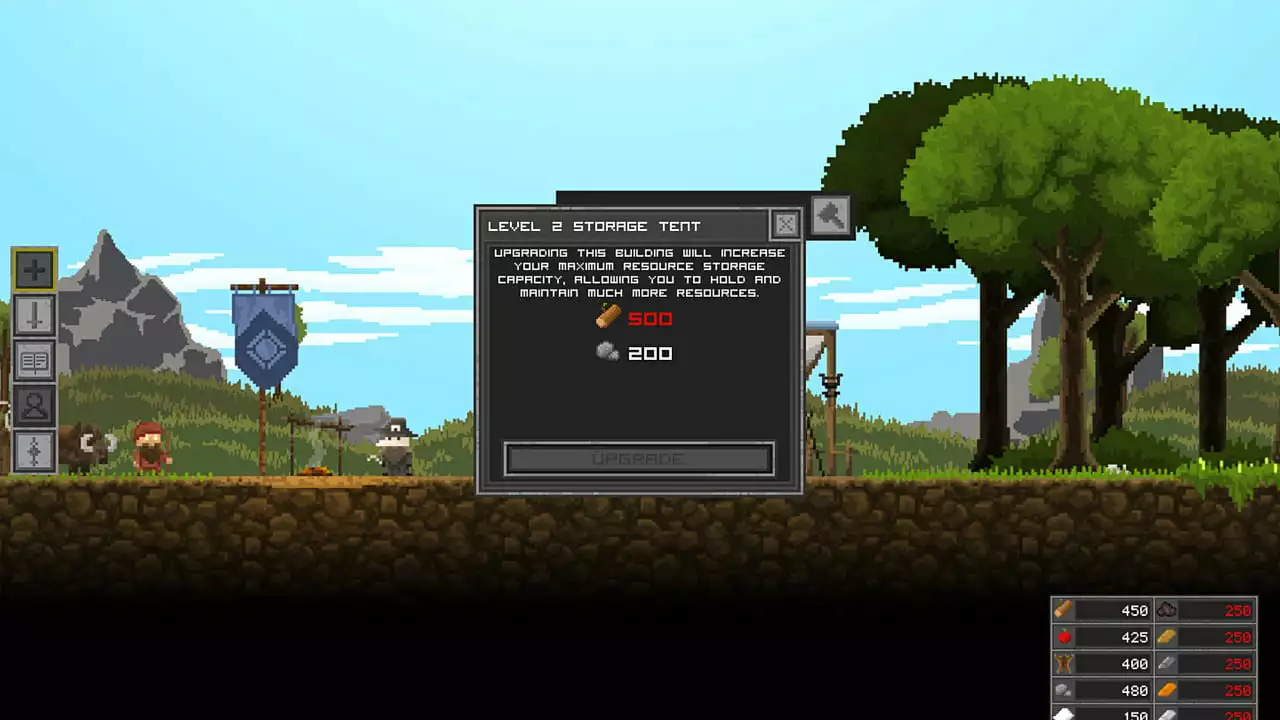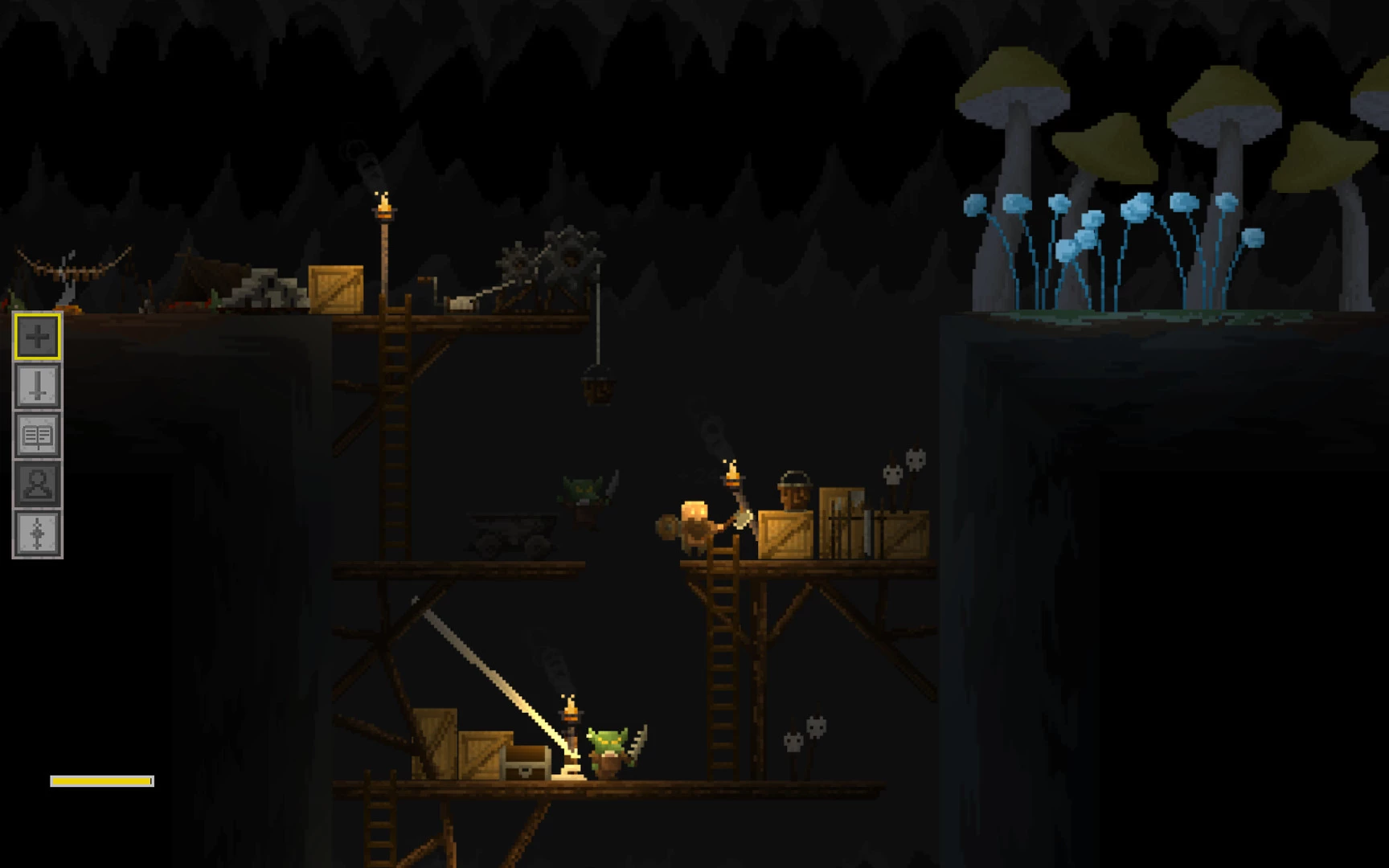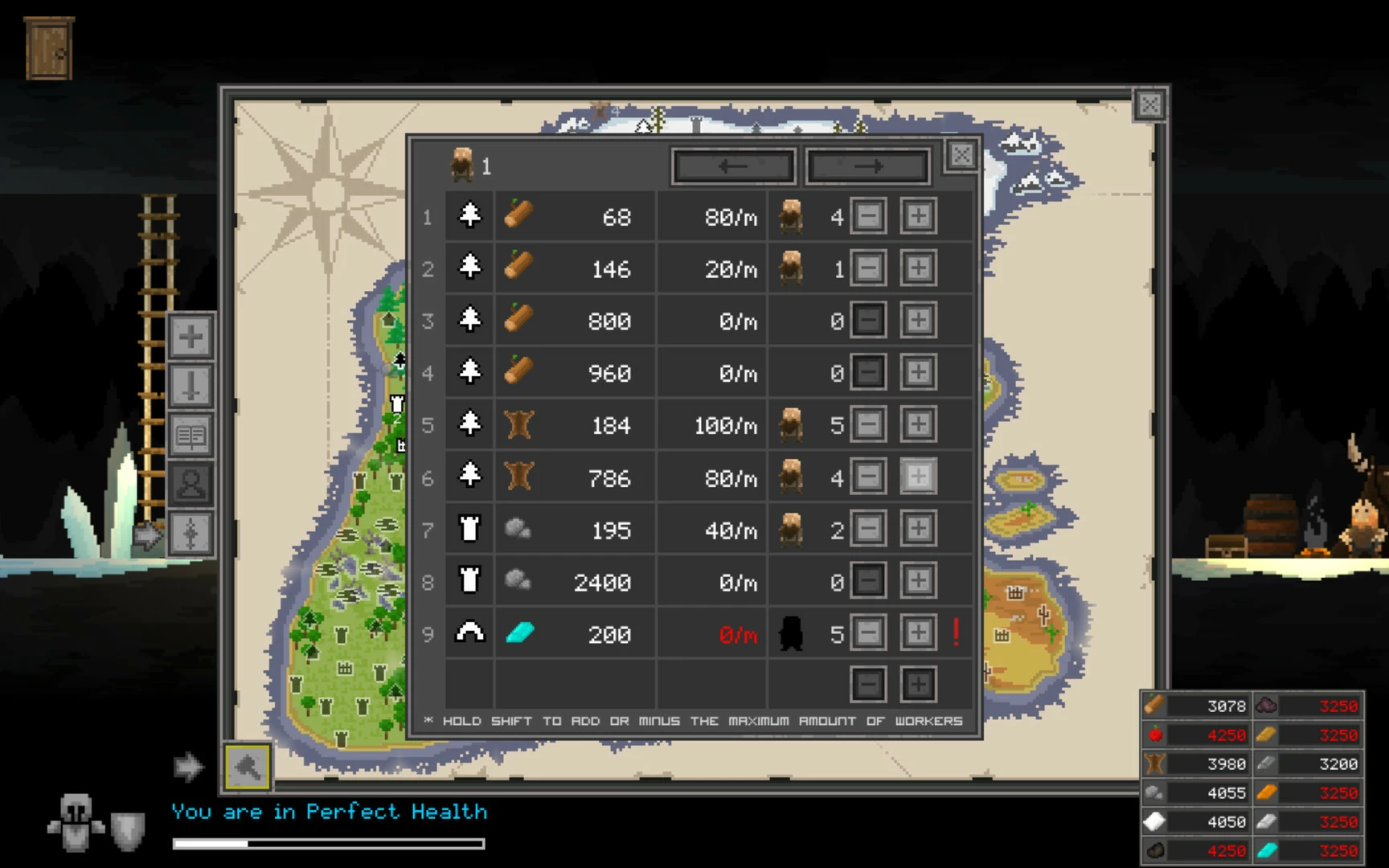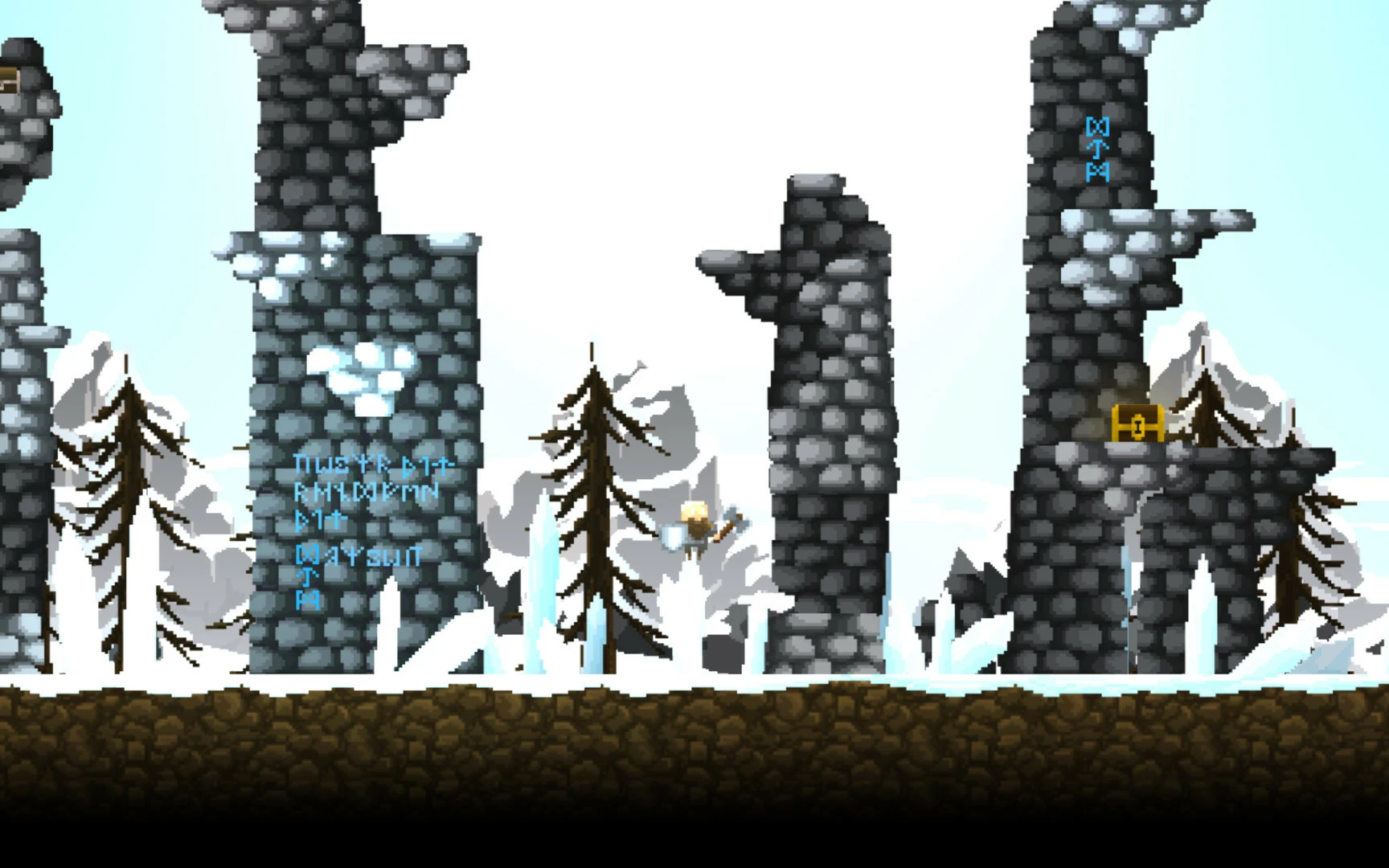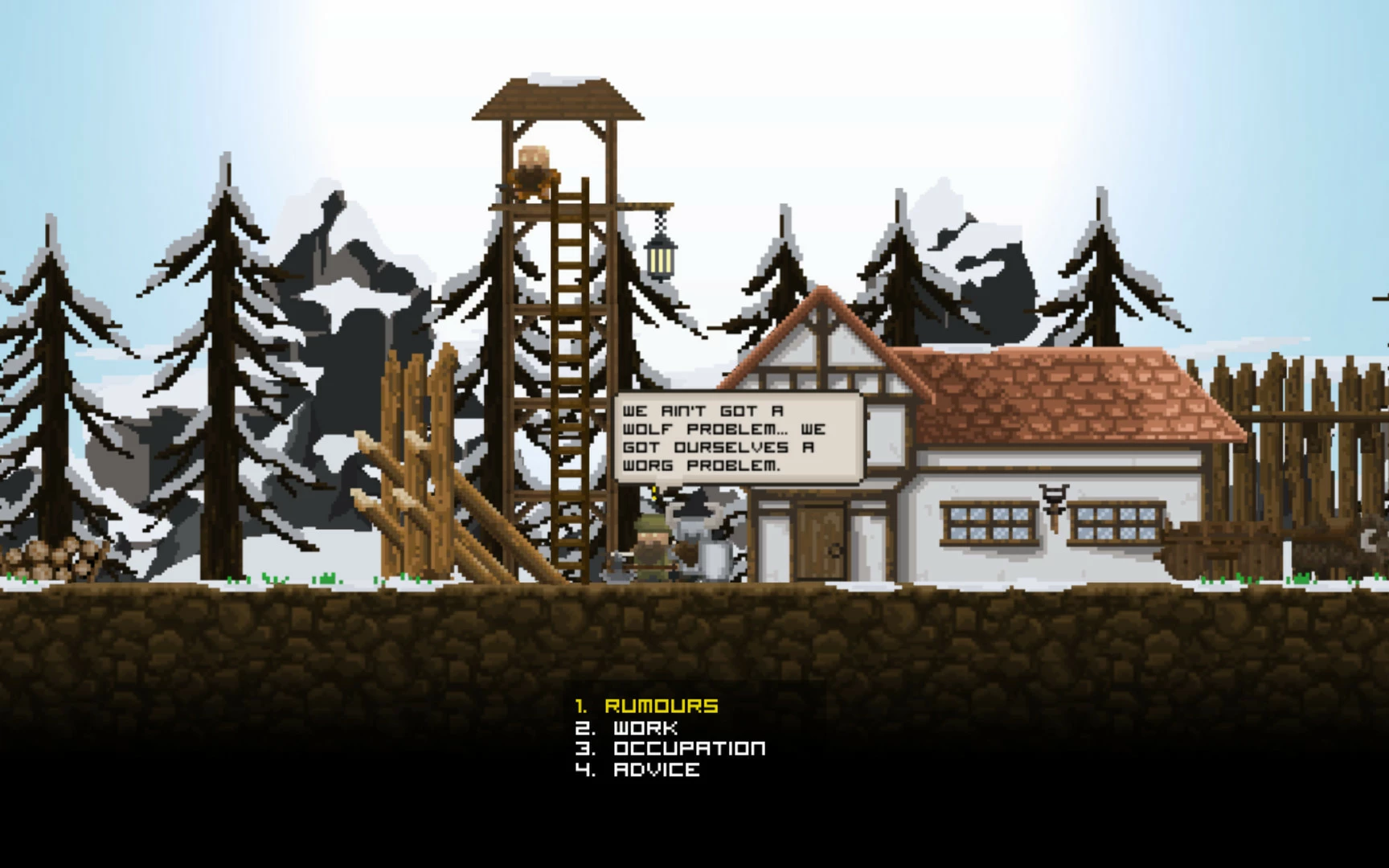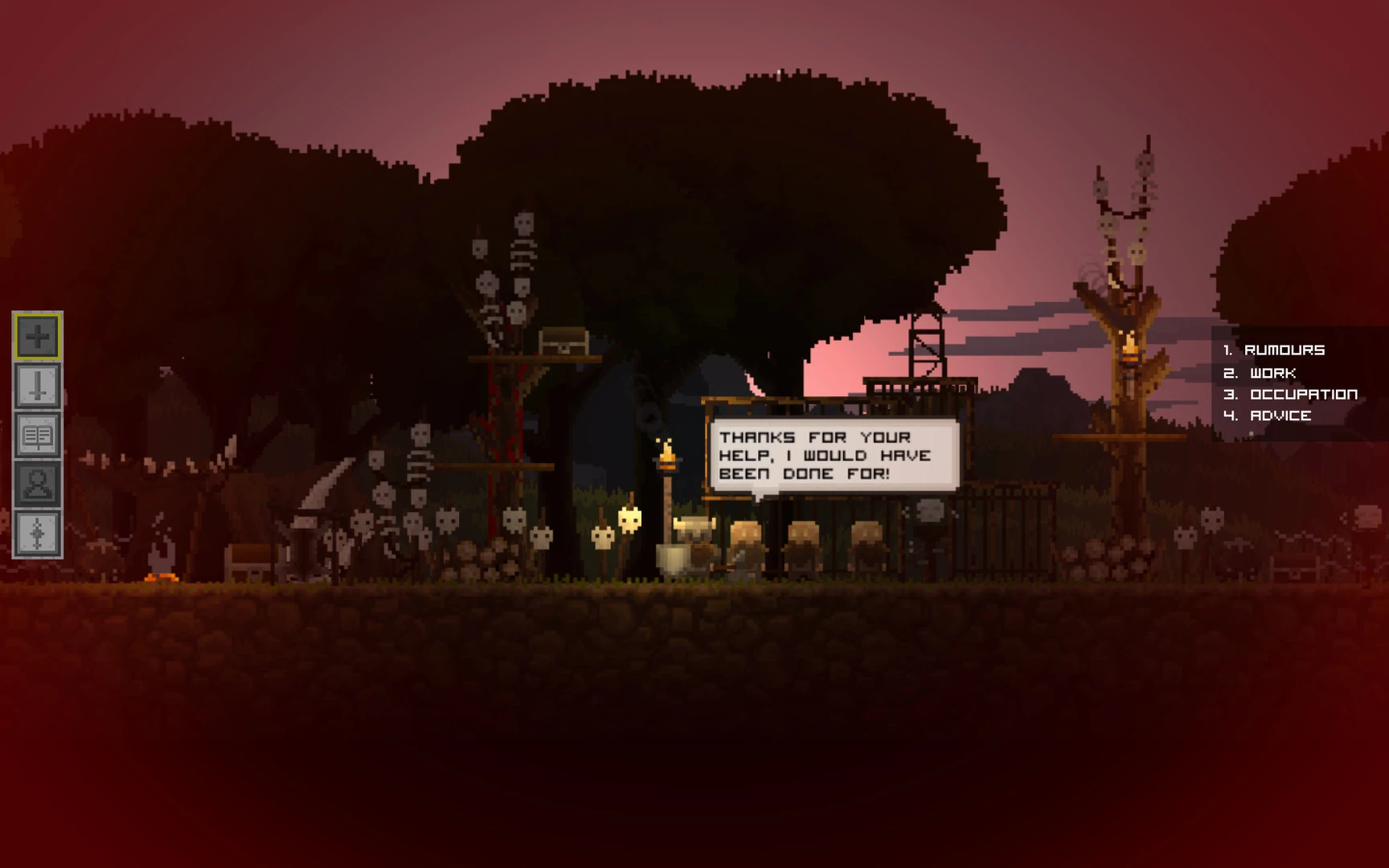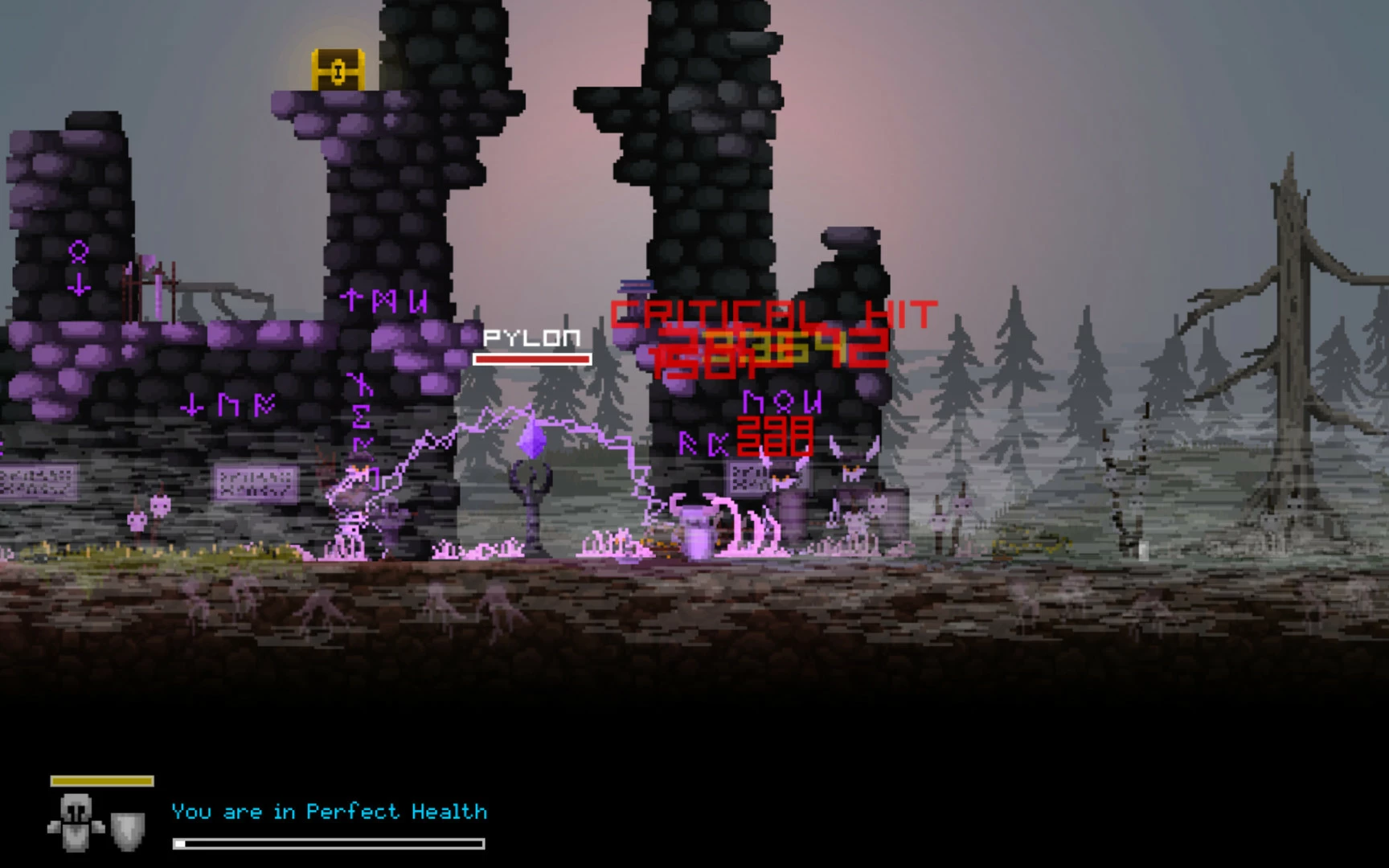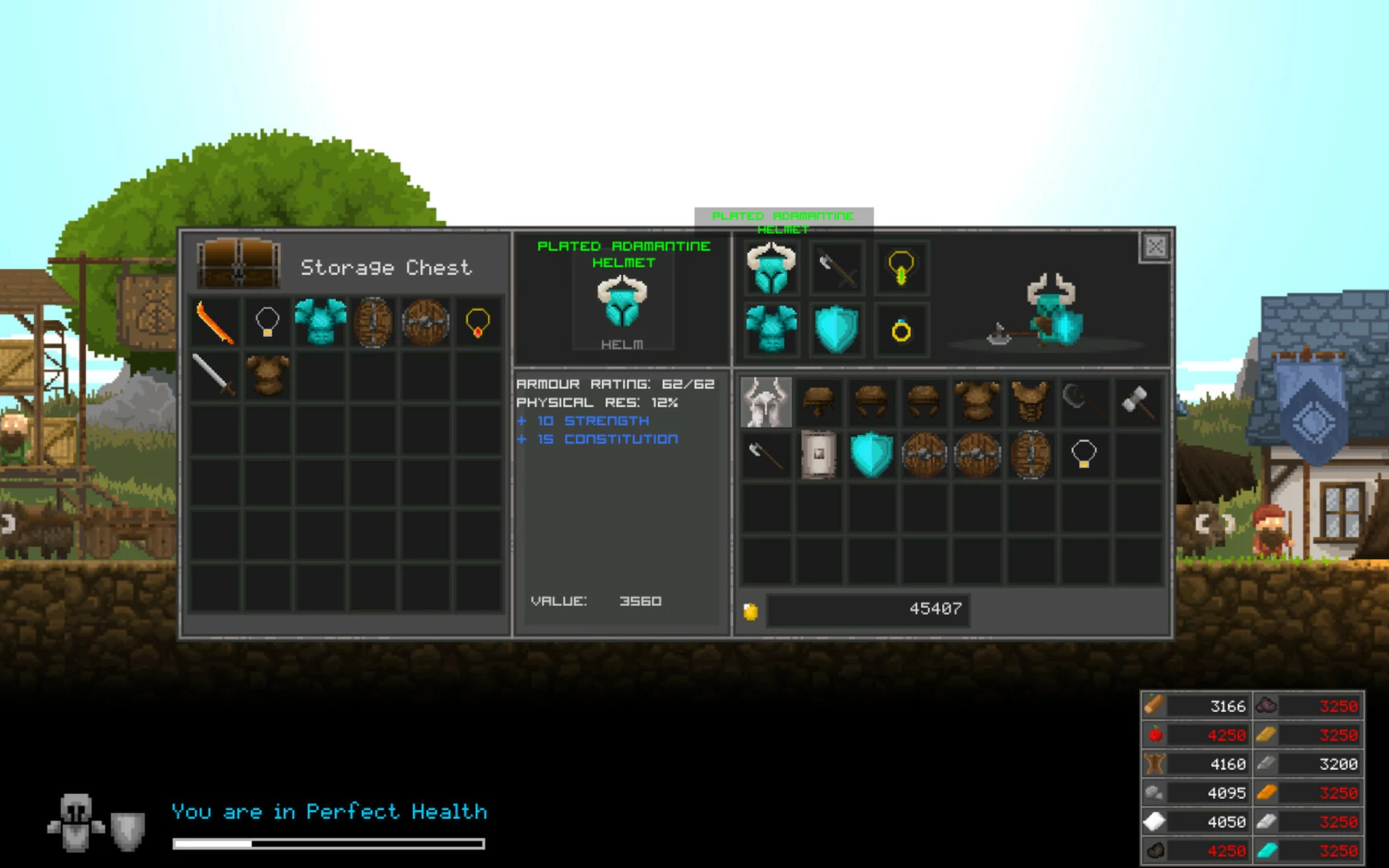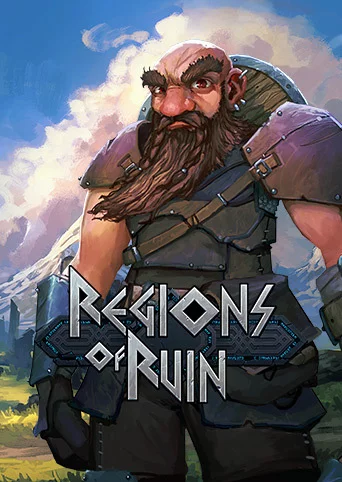
Regions of Ruin (2018)
Genres:Role-playing (RPG), Adventure, Strategy, Indie, Platform, Simulator, Fighting
Themes:Action, Fantasy
Game modes:Single player
Story:Regions of Ruin is a 2D pixel side-scrolling RPG with town-building, where you explore, fight and build into an open world that progressively challenges you and your settlement, and threatens the extinction of the dwarven race.
Vote to bring this game to GOG and help preserve it.19
Jogo viciante e muito divertido, joguei ele na epoca em que estava no meu ultimo ano escolar, no começo dele, lembro de jogar ele em janeiro e ficar muito ansioso sobre esse ciclo que se fecharia, e por medo do que o futuro me traria, dediquei bastante tempo a esse jogo, até o platinei, consegui superar meus medos e foi graças a esse grande jogo que passa despercebido por muitos, mas é um jogo muito bom.

Fright NightBased on the 1985 movie of the same name. You play as vampire Jerry Dandrige and search for victims to take their blood.Action Horror Survival

Pipistrello and the Cursed YoyoAre you ready for the first Yoyovania?! In this 2D top-down adventure you'll explore a sprawling urban landscape, reinterpreting your surroundings through your mastery of yoyo tricks. Combine moves for traversal, fight the city's rival crime lords, and regain the influence of the Pipistrello family!Action
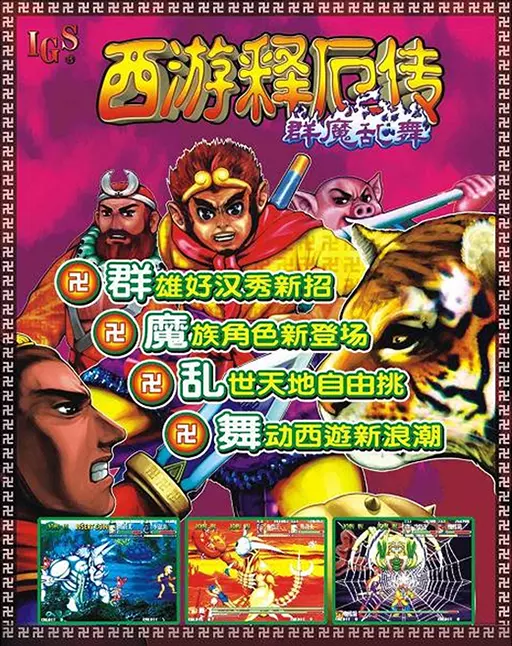
Oriental Legend SuperOriental Legend Super is a side scrolling fighting game produced by Taiwanese company I.G.S. in 1998. As an enahnced version of Oriental Legend, It adds new skills and removes some useless skills. In version 100, It was called Oriental Legend Special outside Asia. After version 100, It is named Oriental Legend Super/Xiyou Shi E Chuan Super.New Action Comedy
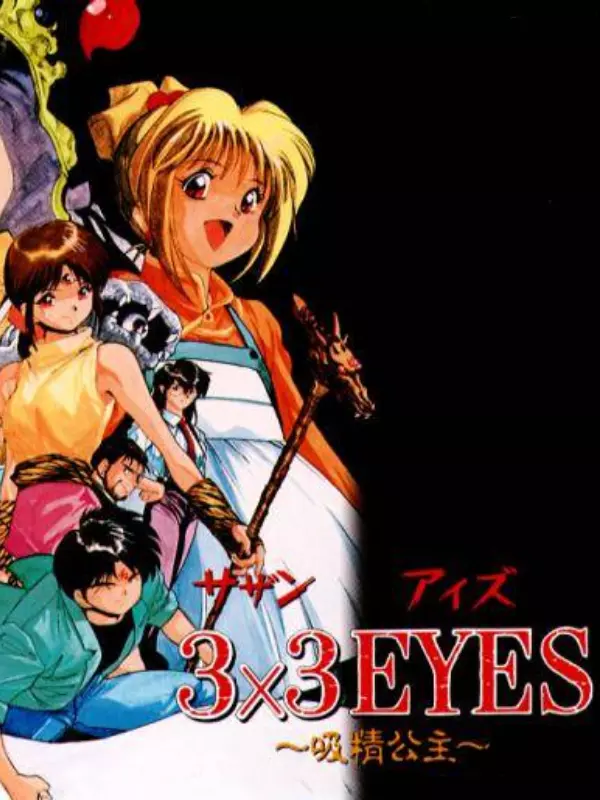
3x3 Eyes: Kyuusei Koushu3x3 Eyes - Kyuusei Koushu is based on the manga and anime series 3x3 Eyes. It tells the story of a simple Japanese teenager Yakumo, who lives in Tokyo and tries to study at his high school and to earn his living by working as a cross-dressing waiter at the same time. His father was a famous explorer and adventurer, but he died after a mysterious accident during one of his journeys to Tibet. One day, Yakumo meets a girl who calls herself Pai. She tells him that she belongs to an ancient powerful race of immortals, called the sanzhiyan, the three-eyed ones. It appears that Yakumo's father worked together with Pai, and that Pai's biggest wish is to become a normal human again. Since then, Yakumo and Pai work together, but they must be aware of other sanzhiyan - powerful demons with their own evil plans.Fantasy

Death GateDeath Gate is a classic adventure game from the much revered Legend Entertainment. The studio is known for developing games that include exceptionally well crafted puzzles and a wacky sense of humor which frequently breaks the fourth wall and plays to a wide assortment of offbeat puns. Moreover, the company has emerged with a winning streak of fantasy and sci-fi games based on popular literature adaptations. The most famous of these are Frederick Pohl's Gateway and Terry Brooks' Shannara.
In 1994, Legend Entertainment has chosen to adapt not 1 book but the whole series of 7 books by Margaret Weis and Tracy Hickman known as The Death Gate Cycle. The original release of the game even includes a special gift for fans of the book series, namely an exclusive short story written by the same authors that tells some of the history of the mysterious Assassin's Guild from the series.
In Death Gate, the player is cast in the role of a freshly freed Patryn—a young, brave wizard named Haplo. By his deeds in the Labyrinth, he has gained Xar's trust to be sent as a scout to the other 4 realms. The way between them leads through a mystical portal known as the Death Gate. For his journey, Haplo is handed not a single but several quests to complete. He must first explore the realms, learn about the new lands, and find the pieces of the World Seal that will allow the reformation of the world to its original whole. He must also retrieve as much of forgotten magical lore as he can, and find runes that will allow him to enter all the other realms. Finally, and most importantly, he must find out what has happened to the Sartan who seem to have vanished somewhere long ago, so that Xar will be able to bring them to the proper Patryn justice.
The game, by taking inspiration from the first 4 books, creates a certain unique experience for the player that stands out among other fantasy adventures. There is an unusually layered structure based on the initial premise of the 5 separate realms, since the consequences of the sundering run much deeper than mere differences in landscapes. From realm to realm life conditions vary enormously, including geography, history, fauna, flora and astronomical bodies. For each realm, the population is divided into very specific societies, although many attributes of each race remain common. Several royal families, powerful guilds, and wealthy, independent merchants all have their own specific goals and ambitions that are not at all connected to the grand schemes of the Patryn and the Sartan, which they mostly are unaware of at this time after centuries of their absence. The distinctiveness of each culture's circumstances and the individual diversity of the larger and smaller schemers within the cast of characters give a special magic and wonder to the proceedings in the game, especially when the player visits a new realm for the first time and starts exploring it. The worlds possess a mysterious, intriguing flavor, but with a touch of whimsical surprises from nearly everywhere. Each encounter with Xar between travels reveals more information concerning the whole mechanics that connect these realms.
Death Gate contains some exceptionally good voice acting. This is especially true for Henry Strozier who plays the role of Xar. He carries a low, charismatic, and authoritative voice that perfectly befits a character with a brave heart, long experience, deep wisdom, but a good share of arrogance. He shines for good measure too, since the player will spend more time conversing with his character than any other in the game. Haplo, who is only heard in conversations, voiced by David DeBoy, does not have a plain, uninteresting voice either. He sounds slightly arrogant and lordly like his master, but also rather youthful, yet manly enough to give an air of independency.
The MIDI music in Death Gate is very well done. The compositions are perfect for an epic fantasy setting. The tunes are often light and comforting, but they can change dramatically to a more majestic tone when visiting the king's palace and to a darker motif when exploring the undergrounds of Abarrach, the vicious Labyrinth, or the deadly Assassin's Guild.
Aside from Haplo and Xar, several other characters from the books also make an appearance in the game. Many of them, however, have been greatly simplified and reduced to only episodic roles with little development. Many major characters from the books are missing altogether, most notably Alfred, whose role is crucial in bringing out Haplo's characterization in the literary originals. On the other hand, some of the memorable archetypes from the books are used in new, interesting ways. For example, a boy named Bane has been recast into a different child with a different life and social standing, though both share a very similar personality. The character that stays most true to the canon is the whimsical, crazy wizard Zifnab, who appears in all his pun infested glory. In general, the plotlines are less violent and happier than those in the books, and the characters show less moral ambiguity.
Death Gate plays like a traditional point-and-click adventure game, but like a role-playing game it is as much about being free to explore the fictional world as about following a foreordained storyline thread. There is quite a bit of narrative text, diaries, historical documents, and dialogs to sieve through. They are all well written and are rather fascinating, since everything is directly connected to the quests the player needs to complete or the puzzles the player needs to solve. There is a fine dose of humor in the game too, but nothing so unsubtle that may distract from taking the main conflicts of the story seriously. From this stance, Death Gate is actually quite a departure from the largely comical gallery of previous game titles from Legend Entertainment.
The puzzles in Death Gate are a bit on the easy side, but the enjoyment they give is very well balanced by their ingenuity. The wealth of subplots, quests, plot twists, and deceptions add a lot of tension to the player's own proceedings. There is a certain logic and buttons based puzzle that is rather hard to beat. However, the player can ask for help from the game to solve it (or even skip over it). In general, the difficulty level of the game lies somewhere between easy and medium. The player can die in the game, but there is an option available to undo the player's last fatal action.
Comparison with the books quickly reveals some of the obvious budgetary or time constraints the developer must have faced during Death Gate's development. Pryan, the realm of fire, is build of elements taken not only of this realm in its original form but also of Chelestra, the realm of water. Consequently, the latter realm has shrunken to a very limited scope in the game. The smallness of Chelestra comes in the game as a particular disappointing revelation, since it is the last of the elemental realms that the player visits.
The interface used in Death Gate has evolved from the original Legend Entertainment's interactive fiction interface. There is an always available standard list of commands (such as Take, Look at, or Use) for the player to choose from, reminiscent of Lucasarts' SCUMM interface. In addition, extra action commands specific to an object appear when it is clicked. For example, when clicking on a door, apart from the standard list of verbs, there are added options to unlock, knock, or eavesdrop on the door. There are many actions which are not necessary to complete the game but which trigger funny responses specific to the situation. Altogether, the interface is a clever compromise between the sense of freedom achieved through a text parser and the simplicity of contemporary point-and-click style.
Gameplay in Death Gate draws on a few gimmicks that are typical of role-playing games. For some parts of the game, the player is able to have a party of several characters. There is also a process of collecting magical spells, even though they have been tweaked for solving puzzles instead of combat. A spell is constructed by connecting runes in a combination. After that, it is traced in the air by Haplo with his hands to bring the spell into motion. The player will be able to learn many spells in the game, mostly from the mensch. This is an important diversion from the canon, as the mensch from the books possess a different kind of magic altogether.
The high resolution graphics of the game will remind fans strongly of fantasy literature illustrated covers. The characters are beautifully detailed in high resolution, but rarely fully animated. However, their faces are always incredibly alive, especially in conversational close-ups. When exploring the game world, the player will notice many intricate but small animations in otherwise generally static sceneries. Major events occurring in the game are partially described in narrative text and partially presented as cut scenes. Sadly, the number of background illustrations in the game is a bit limited. All locations are shown from only a single point of view. Sometimes, the player is drawn to something interesting drawn at the edge of an illustration but is unable to look closely to find out more about it.Fantasy

Lost OdysseyLost Odyssey is set in a world in which a "Magic-Industrial Revolution" is taking place. While magic energy existed in all living creatures beforehand, it suddenly became far more powerful thirty years before the beginning of the game. Because of this, it has affected society greatly, with devices called "Magic Engines" harnessing this power for lighting, automobiles, communication, and robots, among other uses. While previously only a select few could wield magic, many magicians gained the ability. However, such progress has also caused two nations to develop new and more powerful weapons of mass destruction. The kingdom of Gohtza and the Republic of Uhra (which recently converted from a monarchy). Uhra is building Grand Staff, a gigantic magic engine, while the heavily industrialized Gohtza actively pursues magic research of their own. A third nation, the Free Ocean State of Numara, remains isolated and neutral, though it is falling into disarray due to a general attempting to stage a coup d'etat. Uhra, at war with Khent, a nation of beastmen, sends its forces to the Highlands of Wohl for a decisive battle at the start of the game.Trending Open world
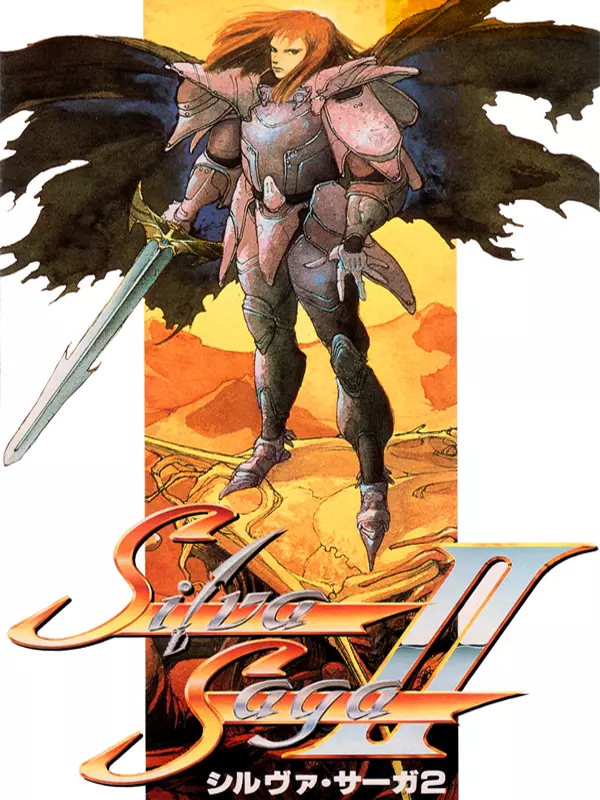
Silva Saga IISilva Saga II: The Legend of Light and Darkness is a role-playing video game developed and published by SETA Corporation, which was released exclusively in Japan in 1993. It is a direct sequel to Silva Saga for the Family Computer.
The player will find similarities with Dragon Quest. Players search out the soldier of light who travels on a journey to defeat the Zolde, son of the Zuhl. Up to 12 mercenaries and deity statues can be combined as well as organized.

Dark EarthDark Earth is a post-apocalyptic action-adventure game for the PC.
Dark Earth takes place several centuries in the future, when a meteor collision with Earth tossed up great clouds of dust that blocked out the sun. Earth's remaining survivors began to seek refuge beneath small openings in the clouds, the few places light could be found. Those that remained in the 'dark earth' were hunted by strange creatures, infected with the darkness.
To shelter themselves from the dangerous 'dark earth', the people began to form cities beneath the light called 'Stallites'. At the time of the game, most of the citizens of the stallite have forgotten their history and now worship the light as a god. The stalites are run by 'Sun Priests', who maintain order and prevent the creatures of darkness from harming the city. The game follows the story of Arkhan, a "guardian of fire", protector of the stallite 'Sparta' and the Sun Priests.
After an attack on the sun priests, Arkhan has a poison thrown into his face that begins to infect him with the dark sickness. He begins to mutate into a creature of the dark and has to find a cure before his transformation is complete. Along the way, he is treated as an enemy by most of his former friends while he struggles to uncover the conspiracy behind the attack.Action Fantasy Historical Science fiction
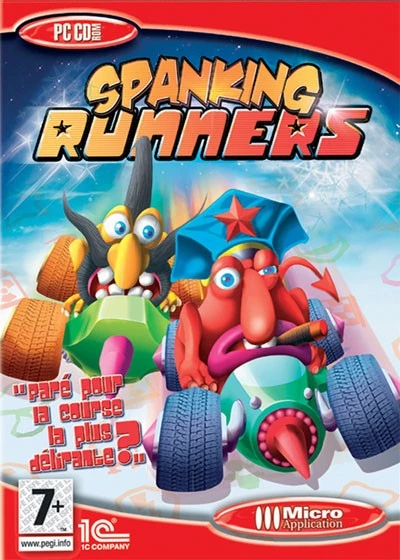
Spanking RunnersArcade combat racer developed by K-D Lab (now KD Vision) for the PC. Notably, it features a tactical, turn-based mode for "people who do not have good reflexes."Comedy
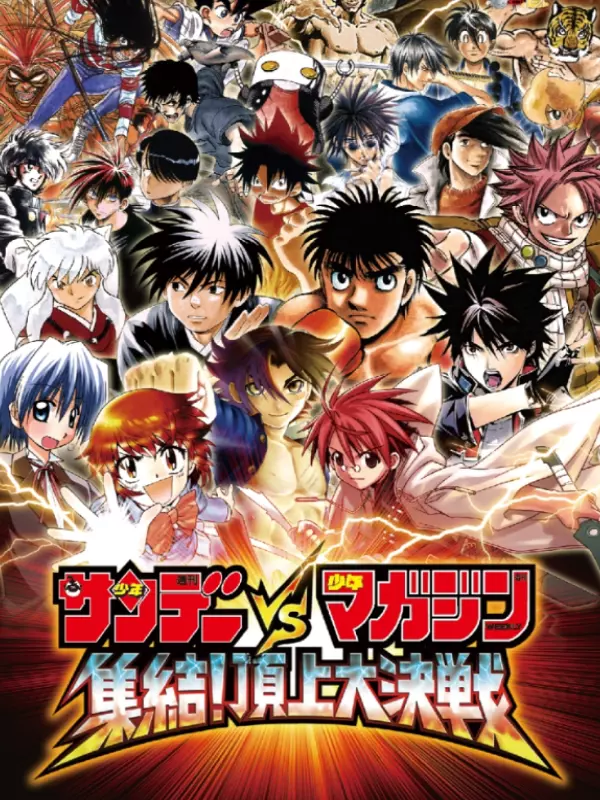
Sunday vs. Magazine: Shuuketsu! Choujou DaikessenSunday vs Magazine is a crossover fighting game featuring dozens of characters from two of Japan's most popular shonen manga magazines: Shogakukan's Shonen Sunday and Kodansha's Shonen Magazine. It is a cel-shaded locked-view fighting game much like Street Fighter IV, and includes more than a dozen characters from each publisher's catalog, including contemporary series as well as older classic titles.
The game features three main modes. First, there is arcade mode, which pits the player against seven randomly-selected characters in order. Next is quest mode, which plays more like a scrolling beat-em-up and tasks the player with fulfilling various time-limited objectives like destroying targets or collecting keys, and which can be played solo or with up to three friend in wireless co-op. Last is the free battle mode, where the player can play a free battle against the computer or a friend via local wireless play.
The game system is relatively simple; characters have a limited set of moves, but they can be customized per character. Each character can also be upgraded using orbs earned in quest mode to buy new moves. In addition to regular moves, each character also has special super moves, which require use of a special bar which fills as the player lands blows. The player also unlocks assist characters as the game is played, which can be assigned to characters to give special assist moves.
There is also a database mode where the player can read introductions for each of the playable and assist characters. The full list of featured series are as follows.
From Shonen Sunday, characters appear from Zettai Karen Children by Takashi Shiina, Shijō Saikyō no Deshi Kenichi by Syun Matsuena, Inuyasha by Rumiko Takahashi, Hayate no Gotoku! by Kenjiro Hata, Kekkaishi by Yellow Tanabe, Kyūkyoku Chōjin R by Masami Yuuki, ARMS by Kyoichi Nanatsuki and Ryoji Minagawa, Law of Ueki by Tsubasa Fukuchi, Honō no Tenkōsei by Kazuhiko Shimamoto, Flame of Recca by Nobuyuki Anzai, Ushio to Tora by Kazuhiro Fujita, and YAIBA by Gosho Aoyama.
From Shonen Magazine, characters appear from Hajime no Ippo by George Morikawa, Air Gear by Oh!great, Fairy Tail by Hiro Mashima, Mahō Sensei Negima! by Ken Akamatsu, Cromartie High School by Eiji Nonaka, Ashita no Joe by Asao Takamori and Tetsuya Chiba, Get Backers by Yuya Aoki and Rando Ayamine, Kotaro Makaritoru! by Tatsuya Hiruta, Samurai Deeper Kyo by Akimine Kamijyo, Tiger Mask by Ikki Kajiwara and Naoki Tsuji, Devilman by Go Nagai, and Cyborg 009 by Shotaro Ishinomori.Action

